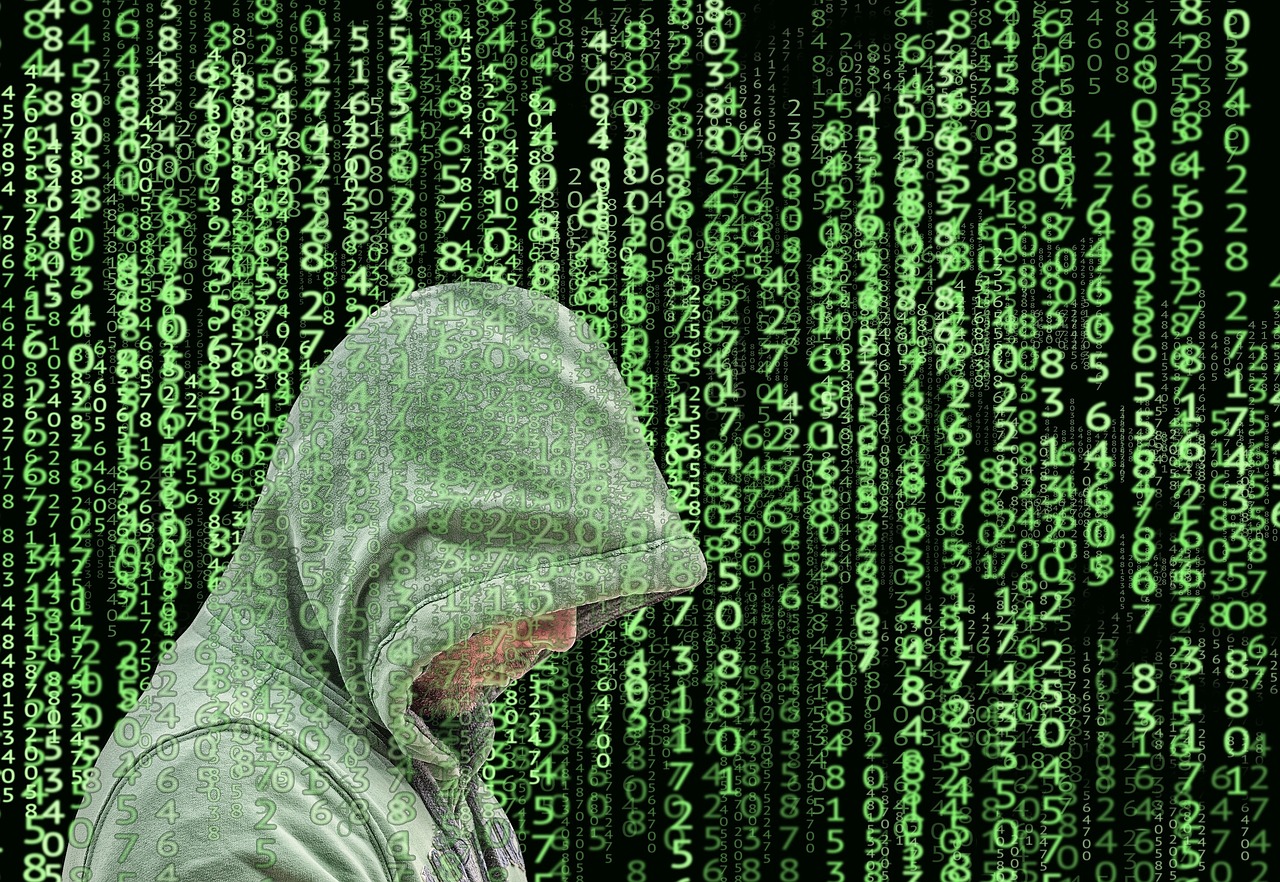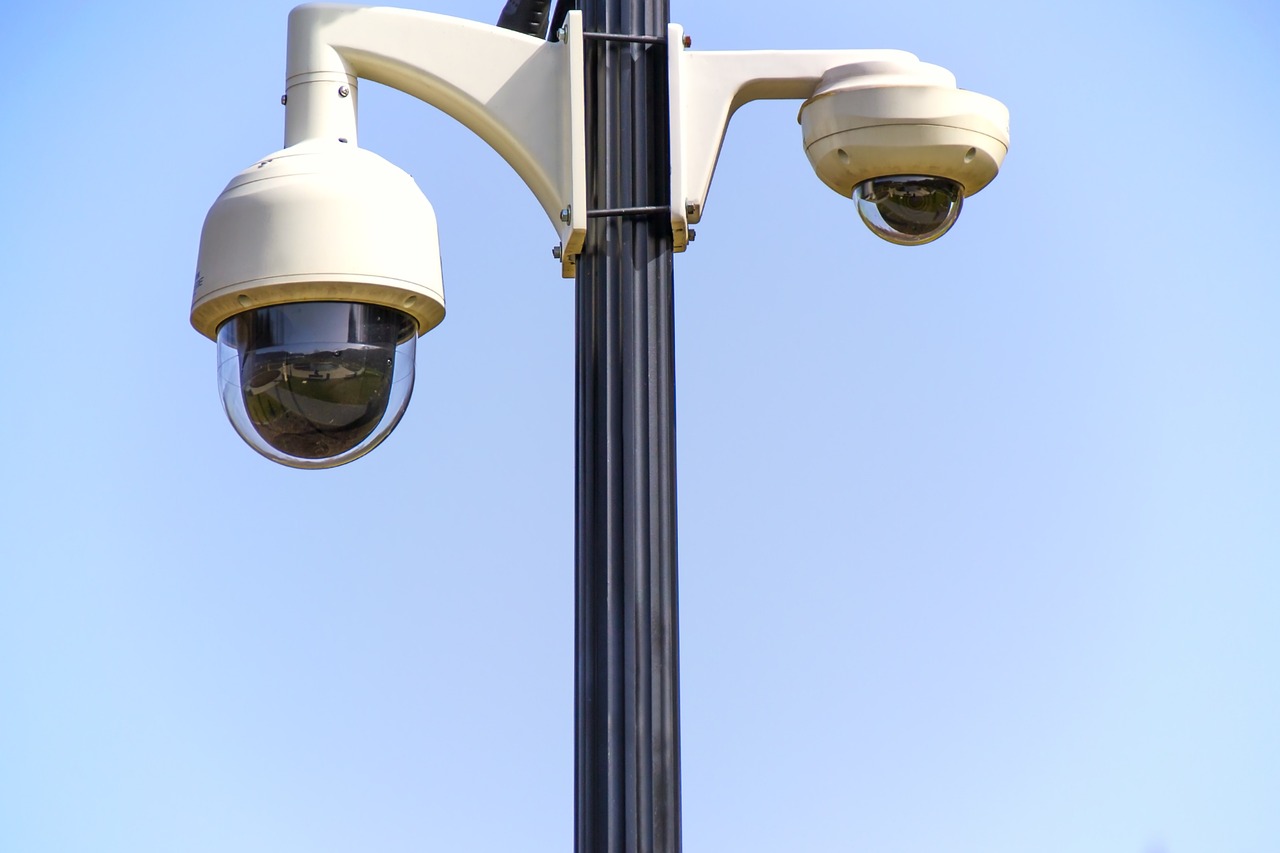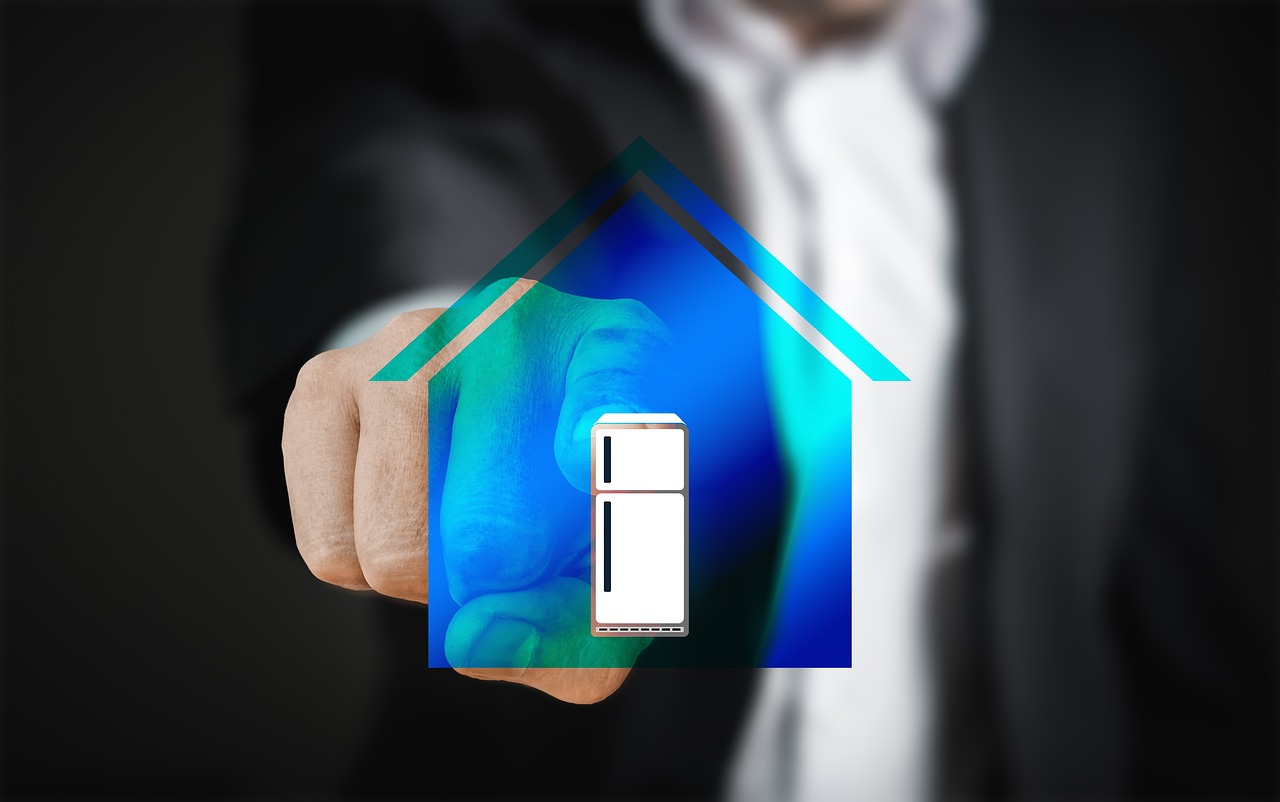Cybersecurity Measures for Smart Homes
In our increasingly connected world, smart homes have become a staple of modern living. From smart thermostats to security cameras and voice-activated assistants, these devices promise convenience and efficiency. However, with great convenience comes great responsibility, particularly regarding cybersecurity. As we embrace this technological revolution, it’s crucial to understand that each connected device is a potential entry point for cybercriminals. This article explores the importance of cybersecurity in smart home environments, outlining effective measures to protect devices and personal data from potential threats and vulnerabilities.
Smart homes introduce unique vulnerabilities due to their interconnected nature. Each device communicates with others, creating a web of potential security risks. For instance, if one device is compromised, it could serve as a gateway for hackers to infiltrate the entire network. Common security risks associated with smart technology include:
- Insecure Wi-Fi Networks: Many smart devices rely on Wi-Fi, making them susceptible to attacks if the network is not secured.
- Weak Passwords: Default passwords are often easy to guess, leaving devices exposed to unauthorized access.
- Lack of Updates: Many users neglect to update their devices, leaving them vulnerable to known exploits.
These vulnerabilities highlight the urgent need for robust protective measures. Without them, users risk exposing not only their devices but also their personal data to potential breaches.
Implementing strong security protocols is crucial for safeguarding smart homes. This includes using encryption to protect data transmitted between devices and ensuring that secure authentication methods are in place. Encryption scrambles data, making it unreadable to anyone who might intercept it, while secure authentication methods verify that users are who they claim to be.
Effective device authentication techniques ensure that only authorized users can access smart home systems. This can include:
- Passwords: Using strong, unique passwords for each device.
- Biometrics: Utilizing fingerprint or facial recognition for an extra layer of security.
- Two-Factor Authentication: Requiring a second form of verification in addition to a password.
By employing these methods, homeowners can significantly reduce the risk of unauthorized access.
Using strong, unique passwords is vital for device security. A strong password typically includes a mix of letters, numbers, and symbols, making it hard to guess. It's not just about creating a complex password; it's also about not using the same password across multiple devices. This way, if one device is compromised, the others remain secure.
Two-factor authentication (2FA) adds an extra layer of security. It works by requiring not only a password but also a second piece of information, such as a code sent to your phone. This method significantly enhances security by ensuring that even if someone has your password, they still can't access your devices without the second factor. It's like having a lock on your door and a security guard outside!
Securing the home network is fundamental to smart home protection. Strategies to enhance network security include:
- Using Firewalls: Firewalls can help block unauthorized access to your network.
- VPNs: A Virtual Private Network (VPN) encrypts your internet connection, making it harder for hackers to intercept your data.
- Secure Wi-Fi Settings: Change default SSIDs and passwords, and consider using WPA3 encryption.
By implementing these measures, homeowners can create a robust security framework that protects their smart devices and personal information.
Keeping software updated is essential for maintaining security in smart homes. Manufacturers frequently release updates to patch vulnerabilities and improve security features. Failing to update devices can leave them open to attacks that exploit known weaknesses.
Many smart devices offer automated updates, which can be a lifesaver for those who might forget to check for updates regularly. Enabling this feature ensures that devices are always protected with the latest security patches, reducing the risk of exploitation.
For devices without automated updates, manual updates are necessary. Best practices include:
- Regularly checking the manufacturer's website for updates.
- Setting reminders to check for updates monthly.
- Following the manufacturer's instructions for applying updates to ensure they are done correctly.
By staying proactive, homeowners can maintain optimal security for their smart devices.
Educating all household members about cybersecurity is crucial. Awareness and training can help everyone recognize potential threats and practice safe online behavior. It's not just about technology; it's about creating a culture of security within the home.
Phishing attacks can target smart home users, often masquerading as legitimate communications from device manufacturers. Recognizing these attacks involves looking for signs such as:
- Suspicious email addresses.
- Generic greetings instead of personalized messages.
- Urgent language urging immediate action.
By educating household members on these signs, they can avoid falling victim to such scams.
Adopting safe internet practices is essential for smart home security. Guidelines include:
- Browsing only secure websites (look for HTTPS).
- Avoiding downloading files from unknown sources.
- Being cautious when sharing personal information online.
By fostering these habits, families can significantly enhance their overall security posture.
Q: What are the most common vulnerabilities in smart homes?
A: Common vulnerabilities include insecure Wi-Fi networks, weak passwords, and outdated software.
Q: How often should I update my smart devices?
A: It's best to check for updates at least once a month, or enable automated updates if available.
Q: What is two-factor authentication and why is it important?
A: Two-factor authentication adds an extra layer of security by requiring a second form of identification beyond just a password.

Understanding Smart Home Vulnerabilities
As we dive into the world of smart homes, it's essential to recognize that with great convenience comes great responsibility. Smart home technology, while offering a plethora of benefits, introduces unique vulnerabilities that can leave your personal data and devices exposed. Imagine your home as a fortress; each smart device is a gate that, if not properly secured, can be easily breached. The interconnected nature of these devices means that a single weak point can compromise the entire system. Let's explore some common security risks associated with smart technology.
One of the most significant vulnerabilities in smart homes is the lack of proper security measures on devices. Many manufacturers prioritize convenience and functionality over security, resulting in devices that are easy to use but also easy to hack. For instance, smart cameras and doorbells often come with default passwords that users neglect to change. This oversight creates an open invitation for cybercriminals to gain access to your home network. In fact, a study found that nearly 70% of smart devices are vulnerable to attacks due to weak security protocols.
Another critical concern is the potential for data breaches. Smart home devices collect a wealth of personal information, from your daily routines to your energy consumption patterns. If these devices are compromised, hackers can exploit this data for malicious purposes, such as identity theft or surveillance. It's like leaving a diary open on your kitchen table; anyone can read it if you don't take precautions to secure it.
Additionally, the integration of Internet of Things (IoT) devices creates a complex web of connections that can be difficult to manage. Each device communicates with others, and if one device is infected with malware, it can quickly spread throughout your network. Cybersecurity experts often refer to this as the "domino effect," where one compromised device leads to a cascading failure of security across the entire smart home ecosystem.
To illustrate these vulnerabilities, consider the following table that highlights common smart home devices and their associated risks:
| Device Type | Common Vulnerabilities |
|---|---|
| Smart Cameras | Default passwords, unsecured streaming |
| Smart Doorbells | Weak encryption, lack of firmware updates |
| Smart Thermostats | Insecure Wi-Fi connections, outdated software |
| Smart Assistants | Voice recognition flaws, data storage issues |
As we can see, each device comes with its own set of vulnerabilities that can be exploited if not properly secured. It's crucial to stay informed about these risks and take proactive measures to safeguard your smart home. By understanding the potential threats, you can better prepare yourself to defend against them.
In conclusion, the convenience of smart homes is undeniable, but it’s essential to remain vigilant. The interconnected nature of smart devices creates a landscape ripe for exploitation, making it imperative for homeowners to educate themselves about the vulnerabilities that exist. After all, a well-informed homeowner is the best defense against cyber threats.

Essential Security Protocols
When it comes to protecting your smart home, implementing strong security protocols is not just a recommendation; it's a necessity. With the rise of interconnected devices, the potential for cyber threats has never been greater. Think of your smart home as a fortress—every door and window needs to be fortified to keep unwanted intruders at bay. One of the most effective ways to achieve this is through encryption and secure authentication methods. These protocols not only safeguard your personal data but also ensure that your devices communicate securely with one another.
Encryption acts like a secret code that only your devices can understand. It scrambles the data being transmitted, making it nearly impossible for hackers to decipher it. For instance, when you send a command to your smart thermostat, encryption ensures that the message is secure during transit. This is crucial because, without encryption, anyone could intercept your commands and potentially manipulate your devices.
Moreover, secure authentication methods play a pivotal role in ensuring that only authorized users can access your smart home systems. Imagine leaving your front door wide open; that’s what it’s like without proper authentication. Techniques such as passwords, biometrics, and two-factor authentication are essential. Passwords should be complex and unique to each device, while biometric methods like fingerprint or facial recognition add an extra layer of security that is difficult to replicate.
Effective device authentication techniques ensure that only authorized users can access smart home systems. For example, a strong password should be at least 12 characters long and include a mix of uppercase and lowercase letters, numbers, and special characters. This complexity makes it significantly harder for hackers to guess your password. Additionally, consider using a password manager to keep track of your various passwords securely.
Biometric authentication is another fantastic tool in your security arsenal. It uses unique physical characteristics, such as your fingerprint or facial features, to verify your identity. This method is not only convenient but also incredibly secure, as it is nearly impossible for someone else to replicate your biometrics.
Using strong, unique passwords is vital for device security. Think of your password as the key to your home; if it's weak, it’s like leaving your door unlocked. To create effective passwords, consider the following tips:
- Use a mix of letters, numbers, and symbols.
- Avoid using easily guessable information, such as birthdays or names.
- Change your passwords regularly to minimize risk.
By following these guidelines, you can significantly reduce the risk of unauthorized access to your smart home devices.
Two-factor authentication (2FA) adds an extra layer of security that can be a game-changer for your smart home. It works by requiring not just a password but also a second form of verification. For example, after entering your password, you might receive a text message with a code that you must enter to gain access. This means that even if someone manages to steal your password, they still can’t access your devices without that second form of verification. It’s like having a second lock on your door—more protection means more peace of mind.
In conclusion, the importance of implementing essential security protocols in your smart home cannot be overstated. By utilizing encryption, secure authentication methods, and strong passwords, you can create a robust defense against cyber threats. Remember, your smart home should be a sanctuary, not a target for hackers.

Device Authentication Techniques
When it comes to securing your smart home, play a pivotal role. These methods ensure that only authorized users can access your devices, keeping intruders at bay. Think of it as a bouncer at an exclusive club, only letting in those who have the right credentials. So, what are the most effective techniques for authenticating devices in your smart home?
One of the most common methods is the use of passwords. A strong password acts as the first line of defense against unauthorized access. However, not all passwords are created equal. A good password should be a mix of letters, numbers, and special characters, and it should be unique to each device. Using the same password across multiple devices is like using the same key for your home, car, and safe; if someone gets that key, they have access to everything.
In addition to passwords, biometric authentication is gaining traction. This technique uses unique physical characteristics, such as fingerprints or facial recognition, to grant access. Imagine having a door that only opens for you, thanks to your unique fingerprint! While this method is incredibly secure, it’s essential to ensure that the biometric data is stored safely and not transmitted over unsecured networks.
Another robust method is two-factor authentication (2FA). This security measure requires not just a password but an additional verification step, such as a code sent to your smartphone. It’s like having a double lock on your door; even if someone has your key (password), they still need the second piece of information to get in. This extra layer significantly reduces the risk of unauthorized access, making it a must-have for any smart home.
To sum it up, effective device authentication techniques are crucial for maintaining the security of your smart home. Whether it’s through strong passwords, biometric verification, or two-factor authentication, implementing these methods can greatly enhance your home’s defenses against cyber threats. Remember, a secure smart home is a happy smart home!
- What is device authentication? Device authentication is the process of verifying the identity of a device or user before granting access to a network or system.
- Why is strong password usage important? Strong passwords help prevent unauthorized access to devices, ensuring that only legitimate users can control smart home systems.
- What is two-factor authentication? Two-factor authentication is a security process that requires two different forms of identification before granting access, enhancing overall security.

Importance of Strong Passwords
In the digital age, where everything from our lights to our locks can be controlled from our smartphones, the importance of strong passwords cannot be overstated. Think of your password as the key to your home. Would you leave your front door unlocked with just any old key? Of course not! Similarly, a weak password can act as an open invitation for cybercriminals to waltz right into your smart home ecosystem, potentially accessing personal data, controlling devices, or even invading your privacy.
Strong passwords serve as the first line of defense against unauthorized access. They act like a sturdy wall around your digital fortress, making it significantly harder for hackers to breach your security. But what constitutes a strong password? Here are some key characteristics to keep in mind:
- Length: A longer password is generally more secure. Aim for at least 12-16 characters.
- Complexity: Use a mix of uppercase and lowercase letters, numbers, and special characters. The more varied, the better!
- Uniqueness: Avoid using the same password across multiple devices or accounts. Each password should be unique to its respective application.
- Avoid Personal Information: Steer clear of easily guessable information such as birthdays, names, or common words.
Creating strong passwords is not just about complexity; it's also about strategy. Consider using a passphrase—a memorable sentence turned into a password by taking the first letter of each word, mixing in numbers and symbols. For example, "I love to eat pizza on Fridays!" could become "Il0v2E@P!zZ@oF!". This method not only makes it easier to remember but also significantly increases security.
Lastly, it’s crucial to regularly update your passwords. Just like changing the locks on your doors every few years, updating your passwords helps mitigate risks. Set reminders to change them every few months, and consider using a password manager to keep track of your various passwords securely. In a world where cyber threats are constantly evolving, staying one step ahead can make all the difference in safeguarding your smart home.
Q1: How often should I change my passwords?
A1: It's recommended to change your passwords every 3 to 6 months to maintain optimal security.
Q2: Can I use the same password for multiple devices?
A2: No, using the same password across multiple devices increases vulnerability. Each device should have a unique password.
Q3: What if I forget my strong password?
A3: Consider using a password manager that can securely store your passwords and help you generate strong ones.
Q4: Are password hints effective?
A4: Password hints can be helpful, but they should not reveal too much information. It's better to rely on strong, unique passwords instead.

Two-Factor Authentication Explained
Two-factor authentication (2FA) is like having a double lock on your front door; it adds an extra layer of security that makes it significantly harder for intruders to gain access. In the realm of smart homes, where interconnected devices communicate with each other and often store sensitive information, implementing 2FA is not just a good idea—it's essential. So, how does it work? Well, 2FA requires two forms of verification before granting access to your smart home systems. This typically involves something you know, like a password, and something you have, like a mobile device.
Imagine you’re trying to unlock your smartphone. First, you enter your password, which is the first factor of authentication. But then, to ensure it’s really you, your phone sends a unique code via text message or an authentication app to your secondary device. Only after you enter this code can you access your smart home app or system. This process significantly reduces the likelihood of unauthorized access because even if someone manages to steal your password, they still can’t get in without that second factor.
There are various methods of implementing 2FA in your smart home setup. Here are some common options:
- SMS Codes: A code is sent to your mobile phone via text message.
- Authentication Apps: Apps like Google Authenticator or Authy generate time-sensitive codes.
- Email Verification: A verification link or code is sent to your registered email address.
- Biometric Verification: Fingerprint or facial recognition can serve as the second factor.
While 2FA is a powerful tool, it’s important to remember that no security measure is foolproof. Cybercriminals are constantly evolving their tactics, and some have even found ways to intercept SMS messages. Therefore, it’s advisable to choose the most secure method available, such as using an authentication app or biometric verification, to ensure your smart home remains safeguarded.
In summary, two-factor authentication is a crucial step in enhancing the security of your smart home. By requiring two forms of verification, you make it much more difficult for unauthorized users to access your devices and personal data. So, if you haven’t already, consider enabling 2FA on all your smart home accounts—it’s a simple yet effective way to bolster your home’s cybersecurity!
Q1: What is two-factor authentication?
A1: Two-factor authentication (2FA) is a security process that requires two different forms of identification to access an account or system, enhancing overall security.
Q2: Why is 2FA important for smart homes?
A2: Smart homes are vulnerable to cyberattacks due to interconnected devices. 2FA adds an extra layer of protection, making it harder for unauthorized users to gain access.
Q3: What are the common methods of 2FA?
A3: Common methods include SMS codes, authentication apps, email verification, and biometric verification.
Q4: Can 2FA be bypassed?
A4: While 2FA significantly increases security, it is not completely foolproof. Cybercriminals may find ways to bypass certain methods, so it’s essential to use the most secure options available.
Q5: How can I enable 2FA on my smart home devices?
A5: Most smart home devices allow you to enable 2FA through their settings. Look for security options in the app or device settings and follow the prompts to set it up.

Network Security Measures
Securing your home network is like building a fortress around your castle; it’s essential to protect your precious digital assets from intruders. With the rise of smart home technology, our devices are now more interconnected than ever, which unfortunately means that a vulnerability in one device can lead to a breach of your entire network. To fortify your smart home, it’s crucial to implement robust network security measures that act as your first line of defense against cyber threats.
One of the primary strategies for enhancing network security is to use a firewall. Think of it as a security guard that monitors incoming and outgoing traffic, filtering out potentially harmful data. Firewalls can be hardware-based, acting as a barrier between your home network and the internet, or software-based, providing protection on individual devices. Regardless of the type, having a firewall is non-negotiable for any smart home.
Another effective measure is to utilize a Virtual Private Network (VPN). A VPN encrypts your internet connection, making it much harder for hackers to intercept your data. It’s like sending your information through a secure tunnel, away from prying eyes. This is especially important when using public Wi-Fi networks, which are notoriously insecure. By connecting to a VPN, you can browse the internet safely and keep your smart devices shielded from potential threats.
Additionally, ensuring that your Wi-Fi settings are configured correctly is vital. Here are some essential practices to follow:
- Change Default Credentials: Many devices come with default usernames and passwords that are widely known. Change these immediately to something unique and complex.
- Enable WPA3 Encryption: Use the latest Wi-Fi security protocol, WPA3, to enhance your network's encryption standards.
- Disable WPS: Wi-Fi Protected Setup (WPS) can be a vulnerability; disabling it can prevent unauthorized access.
Moreover, regularly monitoring devices connected to your network is crucial. You can do this by accessing your router’s admin panel, where you can view all connected devices. If you notice any unfamiliar devices, it’s a sign that someone may have gained unauthorized access, and immediate action is required. Regular audits of your network not only help in identifying potential threats but also keep you informed about the devices that have access to your home network.
In conclusion, fortifying your smart home network requires a combination of strong security measures, vigilant monitoring, and proactive management. By implementing firewalls, utilizing VPNs, securing Wi-Fi settings, and regularly auditing your network, you can significantly reduce the risk of cyber threats and ensure that your smart home remains a safe haven in an increasingly digital world.
Q1: What is the best way to secure my smart home network?
A: The best way to secure your smart home network is to use a combination of a strong firewall, a VPN, and secure Wi-Fi settings. Regularly updating your devices and monitoring connected devices also plays a crucial role.
Q2: How often should I change my Wi-Fi password?
A: It’s recommended to change your Wi-Fi password every three to six months, or immediately if you suspect any unauthorized access.
Q3: Can I use my smart devices while connected to a VPN?
A: Yes, you can use your smart devices while connected to a VPN. However, ensure that your VPN is compatible with your devices to avoid connectivity issues.
Q4: What should I do if I detect an unauthorized device on my network?
A: If you detect an unauthorized device, immediately change your Wi-Fi password, disconnect the device, and consider resetting your router to factory settings to remove any potential intruders.

Regular Software Updates
In the ever-evolving landscape of technology, keeping software updated is not just a recommendation; it's a necessity for maintaining security in smart homes. Think of your smart devices as a fortress. If the walls are not regularly reinforced, intruders can easily breach your defenses. Regular software updates act as those reinforcements, patching vulnerabilities and fortifying your devices against potential threats. Without these updates, your smart home could become a playground for cybercriminals.
Most smart devices come equipped with various features that enhance their functionality, but these features can also introduce vulnerabilities if not properly secured. As manufacturers discover new threats, they release updates to address these issues. Therefore, neglecting updates can leave your devices exposed to hackers looking to exploit outdated software. It's similar to leaving your front door wide open; you wouldn't do that, right? So, why would you leave your devices unprotected?
Moreover, keeping software updated is not just about security; it also ensures that your devices function optimally. Updates often include performance improvements and new features that can enhance your overall smart home experience. For instance, a simple update might improve the connectivity of your smart thermostat, making it more efficient in regulating your home’s temperature. The benefits are twofold: you enhance security and improve functionality.
To make this process easier, many smart devices now offer automated update features. By enabling this option, you can ensure that your devices are always equipped with the latest security patches without having to remember to check for updates manually. This is akin to setting your car's oil change reminder; it keeps your vehicle running smoothly without you having to constantly think about it. However, not all devices have this feature, so it’s crucial to stay vigilant.
Automated updates can be a lifesaver in the fast-paced world of technology. When enabled, your devices will automatically download and install updates as they become available, reducing the risk of human error. It's like having a personal assistant who ensures that everything is up to date without you lifting a finger. However, it’s essential to check that this feature is enabled on all your devices. You wouldn’t want to miss out on critical updates simply because a setting was left unchecked!
For devices that lack automated updates, manual updates are essential. Here are some best practices to follow:
- Set a Schedule: Designate a specific time each week or month to check for updates.
- Check Manufacturer Websites: Regularly visit the websites of your device manufacturers for any announcements regarding updates.
- Read Update Notes: Before updating, read the notes to understand what changes are being made and how they might affect your device.
By following these practices, you can ensure that your smart home remains secure and up-to-date. Remember, in the world of cybersecurity, an ounce of prevention is worth a pound of cure. Keeping your software updated is a simple yet effective way to protect your home from potential threats.
Q: How often should I check for software updates?
A: It’s advisable to check for updates at least once a month, or more frequently if your devices do not have automated updates enabled.
Q: What should I do if an update fails?
A: If an update fails, try restarting the device and attempting the update again. If the issue persists, consult the manufacturer’s support resources for assistance.
Q: Can I ignore updates if my device seems to be working fine?
A: Ignoring updates can be risky. Even if your device seems to be functioning well, it may still have vulnerabilities that could be exploited by cybercriminals.

Automated Update Features
In the rapidly evolving landscape of smart home technology, have become a game-changer for maintaining security. Imagine your smart devices as a fortress; without regular reinforcements, vulnerabilities can easily be exploited by intruders. Automated updates serve as those reinforcements, ensuring that your devices are always equipped with the latest security patches and software enhancements without requiring constant manual intervention.
Many modern smart devices come with built-in capabilities to automatically download and install updates. This feature not only saves you time but also significantly reduces the risk of forgetting to apply critical updates. For instance, consider your smart thermostat. If it receives an update that addresses a security flaw, having it set to update automatically ensures that your home remains a safe haven, even if you’re busy with your daily life.
However, it's essential to understand how these automated updates work. Typically, devices will check for updates at regular intervals, often during off-peak hours to avoid disrupting your daily activities. Once a new update is detected, the device will download it and install it, usually requiring a reboot. This seamless process is designed to be user-friendly, allowing you to enjoy the benefits of your smart home without the hassle of manual updates.
While automated updates significantly enhance security, there are a few considerations to keep in mind:
- Device Compatibility: Not all devices support automated updates. It's crucial to check your device's specifications and settings to enable this feature.
- Update Notifications: Some devices allow you to receive notifications when updates are installed, keeping you informed about the security status of your devices.
- Network Stability: Automated updates rely on a stable internet connection. Ensure your home network is reliable to avoid interruptions during the update process.
In conclusion, enabling automated update features is a proactive step towards securing your smart home. By allowing your devices to update automatically, you not only protect your personal data but also enhance the overall functionality and performance of your smart home ecosystem. So, take a moment to dive into your device settings and ensure that this invaluable feature is activated. After all, in the realm of cybersecurity, staying one step ahead is always the best strategy!
Q1: What should I do if my device doesn’t support automated updates?
A1: If your device lacks automated updates, set a reminder to check for updates regularly. Make it a part of your monthly routine to ensure your device is secure.
Q2: Can automated updates cause issues with my device?
A2: While rare, some updates may introduce bugs or compatibility issues. It’s wise to monitor your devices after updates and consult the manufacturer if problems arise.
Q3: Are there privacy concerns with automated updates?
A3: Most reputable manufacturers prioritize user privacy and security. However, always read the privacy policy and settings to understand what data may be shared during updates.

Manual Update Best Practices
When it comes to maintaining the security of your smart home, manual updates can be a vital component, especially for devices that don't support automated updates. Regularly checking for updates ensures that your devices are fortified against the latest threats. But how do you go about this? Let's break it down.
First and foremost, create a schedule for checking updates. Just like you would for an important meeting or a doctor's appointment, set aside time each month to review your devices. This consistency helps you stay on top of any necessary updates without letting them pile up. You might be surprised at how often manufacturers release patches to address vulnerabilities!
Next, it's crucial to know where to find updates. Most smart devices will have a dedicated app or a website where updates can be downloaded. Make sure you are familiar with these resources. If you're unsure, consult the user manual or the manufacturer's website for guidance. This knowledge not only saves time but also prevents the frustration of searching for updates when you need them most.
When you do find an update, take a moment to read the release notes. These notes often detail what vulnerabilities the update addresses or what new features it introduces. Understanding the implications of an update can help you appreciate the importance of keeping your devices current. Additionally, if an update seems to introduce new features, consider whether these features are necessary for your usage. Sometimes, less is more when it comes to functionality and security.
Before applying any updates, ensure that your devices are connected to a secure network. Applying updates over an unsecured Wi-Fi connection can expose your devices to additional risks. If possible, connect to a VPN or a private network to safeguard your data during the update process.
After applying updates, restart your devices if prompted. This step is often necessary for the changes to take effect fully. Think of it as giving your device a refreshing reboot, much like a good night's sleep for the human brain!
Lastly, keep a record of your updates. Whether it's a simple spreadsheet or a note on your phone, tracking when each device was last updated can be incredibly helpful. This practice can prevent you from missing important updates and ensure that you're always one step ahead in protecting your smart home.
In summary, while manual updates may seem tedious, they are a crucial part of maintaining the security of your smart home. By staying organized, informed, and proactive, you can significantly reduce the risk of vulnerabilities and ensure that your devices are always operating at their best.
- How often should I check for manual updates? It is recommended to check for updates at least once a month, but you may want to do so more frequently if your devices are used heavily.
- What should I do if an update fails? If an update fails, try restarting your device and attempting the update again. If the issue persists, consult the manufacturer's support page for troubleshooting tips.
- Are manual updates necessary if my device has automatic updates? While automatic updates are helpful, it's still a good practice to manually check for updates occasionally to ensure you haven’t missed anything important.

Educating Household Members
In today's digital age, where smart homes are becoming the norm, about cybersecurity is not just beneficial; it's essential. Imagine your home as a castle, with each smart device acting as a gatekeeper. If your family members don't understand how to protect these gates, it becomes all too easy for unwanted intruders to sneak in. The first step in creating a secure smart home environment is ensuring that everyone, from the youngest to the oldest, knows the basics of online safety.
One of the most effective ways to educate your family is through regular discussions about cybersecurity threats and how to recognize them. For instance, many people are unaware of the dangers posed by phishing attacks, which can come in the form of seemingly innocent emails or messages. By explaining what phishing is and how it works, you can empower your household to spot these threats before they become a problem. Consider using real-life examples or even role-playing scenarios to make the learning process engaging and memorable.
Another crucial aspect of education is teaching safe internet practices. This includes guidelines such as:
- Using Strong Passwords: Remind everyone to create unique passwords for their devices and accounts, avoiding easily guessable information.
- Downloading Safely: Encourage family members to only download apps and software from trusted sources to reduce the risk of malware.
- Recognizing Secure Websites: Teach them to look for “https” in the URL and a padlock icon in the address bar when entering sensitive information online.
Moreover, it’s essential to foster an environment where family members feel comfortable discussing any suspicious activities or potential threats they encounter. This open communication can help you address issues before they escalate into serious problems. Consider setting up a family cybersecurity night, where everyone can share their experiences and learn from each other.
Lastly, incorporating practical exercises can significantly enhance learning. For example, you could simulate a phishing attack by crafting a fake email and asking family members to identify the red flags. This hands-on approach not only makes learning fun but also reinforces the importance of vigilance in maintaining a secure smart home.
| Question | Answer |
|---|---|
| What is a phishing attack? | A phishing attack is a fraudulent attempt to obtain sensitive information by disguising as a trustworthy entity in electronic communication. |
| How can I create strong passwords? | Use a mix of uppercase and lowercase letters, numbers, and special characters. Avoid using easily guessed information like birthdays or names. |
| Why is two-factor authentication important? | Two-factor authentication adds an extra layer of security by requiring not only a password but also a second form of verification, making unauthorized access much harder. |

Recognizing Phishing Attacks
In the age of smart homes and interconnected devices, phishing attacks have become a significant threat to our digital security. These deceptive tactics often masquerade as legitimate communications, tricking unsuspecting users into revealing sensitive information. Imagine receiving an email that looks like it’s from your smart thermostat manufacturer, asking you to verify your account details. At first glance, it seems harmless, but in reality, it’s a clever ploy designed to steal your personal data.
Phishing attacks can take various forms, including emails, text messages, and even phone calls. They often create a sense of urgency, prompting you to act quickly without thinking. For instance, a message might claim that your smart home security system has detected suspicious activity and requires immediate verification. This tactic plays on your instincts to protect your home and can lead you to a malicious website where your information can be harvested.
To effectively recognize phishing attempts, it’s crucial to be vigilant and aware of the common signs. Here are some key indicators to watch out for:
- Suspicious Sender Addresses: Always check the sender's email address. Phishers often use addresses that are slightly altered versions of legitimate ones.
- Generic Greetings: Legitimate companies typically address you by your name. Phishing emails often use generic greetings like “Dear Customer.”
- Urgent Language: Be wary of messages that create a sense of urgency, urging you to act quickly to avoid consequences.
- Links and Attachments: Avoid clicking on links or downloading attachments from unknown sources. Hover over links to see the actual URL before clicking.
Recognizing these signs is your first line of defense. However, if you ever find yourself in doubt, it’s best to reach out directly to the company through their official channels rather than using the contact information provided in the suspicious message. This extra step can save you from falling victim to a phishing scam.
Moreover, educating all household members about these tactics is essential. Encourage open discussions about online safety and share examples of phishing attempts. The more aware everyone is, the less likely they are to be tricked by these scams. Remember, in the world of cybersecurity, knowledge is power, and staying informed can significantly reduce your risk of being compromised.
By understanding and recognizing phishing attacks, you can better protect your smart home and personal data from potential threats. Always approach communications with a critical eye and prioritize your digital safety.
Q: What should I do if I suspect a phishing attack?
A: If you suspect a phishing attack, do not click on any links or provide personal information. Report the email or message to your email provider and the legitimate company it claims to be from.
Q: Can phishing attacks affect my smart home devices?
A: Yes, phishing attacks can lead to unauthorized access to your smart home devices, allowing attackers to control them or access your personal data.
Q: How can I educate my family about phishing?
A: Share examples of phishing attempts, discuss the signs to look for, and encourage them to practice safe online behaviors, such as verifying sources before clicking on links.

Safe Internet Practices
In today's digital age, adopting is not just a recommendation; it's a necessity, especially when it comes to protecting your smart home. Imagine your home as a fortress, and the internet as the vast landscape outside. Just as you wouldn’t leave your gates wide open, you shouldn't expose your devices to unnecessary risks. Here are some key practices to consider:
First and foremost, always use secure connections. When browsing the web or accessing your smart home devices, ensure that you’re connected to a secure Wi-Fi network. Public Wi-Fi might be convenient, but it’s like leaving your front door unlocked. If you must use public networks, consider employing a Virtual Private Network (VPN) to encrypt your data and keep prying eyes at bay.
Another critical practice is to be cautious about the websites you visit. Not all websites are created equal; some are riddled with malware and phishing attempts. Always look for HTTPS in the URL, which indicates a secure connection. If a site doesn’t have this, it’s best to steer clear. Additionally, avoid clicking on suspicious links in emails or messages, as they can lead to dangerous sites designed to steal your information.
Furthermore, it’s essential to regularly review your privacy settings on various platforms. Many smart home devices collect data, and understanding how this data is used and shared can help you maintain control over your personal information. Customize your settings to limit data sharing and only allow necessary permissions for apps and devices.
Educating yourself and your family about recognizing phishing attempts is another vital step in maintaining a secure smart home environment. Phishing scams often come disguised as legitimate communications, tricking users into providing sensitive information. Be vigilant and look for signs such as poor grammar, generic greetings, and suspicious links. If something feels off, it probably is!
Lastly, always keep your software and devices updated. Software developers regularly release updates to patch vulnerabilities that could be exploited by hackers. By enabling automated updates on your devices, you ensure that you’re always protected with the latest security measures. If your device doesn’t support this feature, make it a habit to check for updates manually at least once a month.
In summary, implementing these safe internet practices can significantly reduce the risk of cyber threats to your smart home. Think of it as building a strong defense around your most valuable asset—your home and the data within it. By staying informed and vigilant, you can enjoy the convenience of smart technology without compromising your security.
- What is a VPN and why should I use one? A VPN, or Virtual Private Network, encrypts your internet connection, providing a secure way to browse the web, especially on public networks.
- How can I create a strong password? Use a mix of uppercase and lowercase letters, numbers, and special characters. Aim for at least 12 characters and avoid using easily guessed information like birthdays or names.
- What should I do if I suspect a phishing attempt? Do not click any links or provide personal information. Instead, report the email or message to your email provider and delete it.
- How often should I update my smart devices? Check for updates at least once a month, or enable automated updates if available to ensure you have the latest security patches.
Frequently Asked Questions
- What are the common vulnerabilities in smart homes?
Smart homes are often vulnerable due to their interconnected devices. Common risks include weak passwords, outdated software, and unsecured networks, which can all be exploited by cybercriminals. It's crucial to understand these vulnerabilities to take the necessary precautions.
- How can I secure my smart home devices?
Securing your smart home devices involves implementing strong security protocols. This includes using robust passwords, enabling two-factor authentication, and ensuring your home network is protected with firewalls and secure Wi-Fi settings. Regular software updates are also essential to protect against new threats.
- Why are strong passwords important for smart home security?
Strong passwords act as the first line of defense against unauthorized access. They should be unique and complex, making it difficult for hackers to guess or crack them. Using a combination of letters, numbers, and symbols can significantly enhance your device security.
- What is two-factor authentication and how does it work?
Two-factor authentication (2FA) is an added security layer that requires not only a password but also a second form of verification, such as a text message code or a fingerprint scan. This means that even if someone has your password, they can't access your device without the second factor.
- How often should I update my smart home devices?
You should regularly check for updates on your smart home devices. Many manufacturers release updates to address security vulnerabilities and improve functionality. Enabling automated updates can help ensure your devices are always protected with the latest security patches.
- What are phishing attacks and how can I recognize them?
Phishing attacks are attempts by cybercriminals to trick you into providing personal information, often through fake emails or websites. Look for signs like poor grammar, suspicious links, or requests for sensitive information. Always verify the source before clicking on links or providing any data.
- What safe internet practices should I adopt for my smart home?
To maintain smart home security, practice safe internet habits such as avoiding suspicious downloads, using secure connections (like VPNs), and being cautious about sharing personal information online. Regularly educate all household members about these practices to enhance overall security.



















